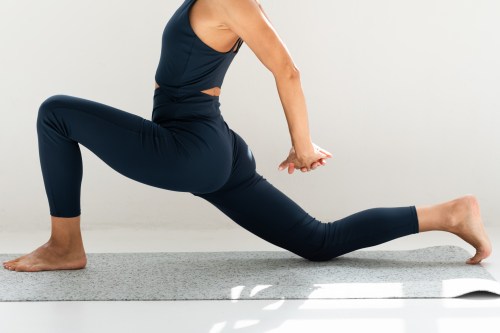HIIT workouts have got a lot of good things going for them. They serve double duty to build strength and spike your heart rate, and are so short and effective that you only need 20 free minutes to squeeze a solid session into your day. But according to new research, too much HIIT may actually be doing your body a disservice.
Overtraining, in general, comes along with a set of risks. It can exhaust your body, disrupt your sleep patterns, and leave you more prone to injury and mood swings. And when you’re doing too much HIIT, the potential issues are amplified even further. In a study out of the Swedish School of Sport and Health Sciences, 11 healthy volunteers were put through regular HIIT sessions on an exercise bike (which involved intervals of all-out pedaling followed by short periods of rest) and gradually increased the time they spent working out over the course of four weeks.
At first, doing moderate amounts of HIIT, improved their performance and their bodies were producing more mitochondria, which you may remember from biology class is the “powerhouse” of the cells. But when they built up to doing HIIT workouts nearly every day, however, their fitness gains and mitochondrial function started to deteriorate. This led to a disturbance in blood sugar, which in the past has been linked to anxiety and crappy sleep.
This isn’t the first time that science has suggested that going overboard on HIIT may be a problem. Because these workouts tend to involve a lot of jumping, they have a well-earned reputation for being not-so-good on your joints. Plus, since the whole point of this type of training is to alternate between periods of all-out effort and rest, if you’re not giving your body proper time to recover in between sessions, you’re not going to get the most out of your time on the mat.
Instead of opting for a more-is-more approach to HIIT, limit yourself to 90 minutes of this type of workout per week, max. This is the point at which the study saw benefits start to decline, so your best bet is to pencil in three 30 minute sessions over the course of seven days. Trainers recommend spacing out your HIIT workouts so that you’re not doing them two days in a row, which will give your muscles plenty of time to rest and reset so that you can perform at max-effort the next time you hit the mat.
On those “recovery” days, you can still do other cardio and strength-building workouts (or simply treat yourself to an ooey-gooey stretch or a few minutes with your Theragun), but leave your all-out moments for your HIIT sessions. Mixing things up with high-intensity and low-intensity workouts is your best bet for making true gains, plus, it will keep you from feeling bored and burnt out by your routine.
Too much of any single type of workout is never a good idea, so consider this your cue to call it quits on that five-days-a-week HIIT routine and try something new.
Need some lower intensity moves in your life? Follow along with the video below.
Oh hi! You look like someone who loves free workouts, discounts for cult-fave wellness brands, and exclusive Well+Good content. Sign up for Well+, our online community of wellness insiders, and unlock your rewards instantly.
Sign Up for Our Daily Newsletter
Get all the latest in wellness, trends, food, fitness, beauty, and more delivered right to your inbox.
Got it, you've been added to our email list.











